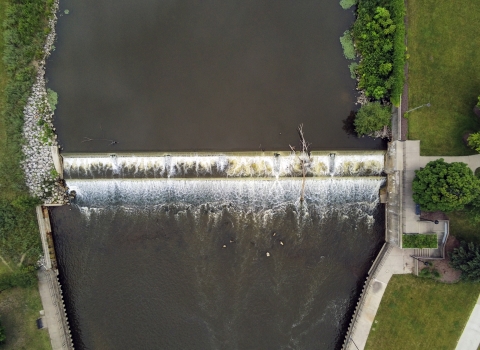Two of my favorite sounds are children laughing and birds singing.
When the two are combined in the same moment — it’s the sound of people connecting with nature. For me, that’s what it’s about, because when people connect with nature, they inevitably care about nature. They also become open to understanding how our connection to nature is important for our communities, our economy, and our well-being.
Imagine our lives without the myriad components that make up the natural world – oceans, rainforests, wetlands, grasslands, deserts, forests, and freshwater systems. Today, these life-sustaining ecosystems face numerous threats including habitat loss and degradation, pollution, and climate change climate change
Climate change includes both global warming driven by human-induced emissions of greenhouse gases and the resulting large-scale shifts in weather patterns. Though there have been previous periods of climatic change, since the mid-20th century humans have had an unprecedented impact on Earth's climate system and caused change on a global scale.
Learn more about climate change . This, in turn, is contributing to the biodiversity crisis, with a severe loss of animals and plants.
The U.S. Fish and Wildlife Service is deeply committed to using every available tool we have to save the world’s most imperiled species and the habitats they depend on. Many of the tools are available to us through the Endangered Species Act — one of the most important conservation laws in the world. Nearly every species protected by the ESA is still with us today, many have been recovered and delisted, and hundreds more are stable or improving.
December 28 marks the 50th anniversary of the ESA, and it’s more important than ever that we be proactive, collaborative, and innovative in our efforts to save America’s at-risk fish, wildlife, and plant species. You’ll read in this issue of Fish & Wildlife News about a few of our successes and challenges. You’ll hear from young people newly engaged in conservation and from Service veterans.
The ESA recognizes that the conservation of threatened and endangered species is a shared responsibility and necessitates everyone’s involvement to be effective. This issue describes essential partnerships that have brought species back from the brink of disappearing and are key to slowing down the extinction crisis.
I want to live in a world where I hear children playing in nature. I want future generations to see a yellow-billed cuckoo and be able to look up at a whitebark pine. I want them to learn how the longsolid and round hickorynut freshwater mussels play an important role in the health of our streams and rivers. As we look to the next 50 years and beyond, let’s work together to enhance our partnerships, and make new ones, to achieve the goals of the ESA by protecting threatened and endangered species and their habitats for the continuing benefit of the American people.



